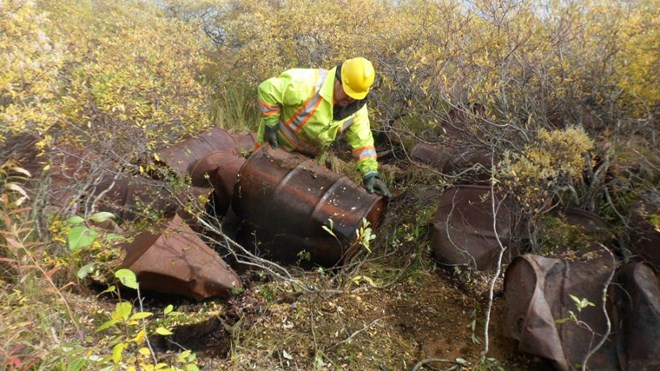The Ministry of Natural Resources and Forestry was recognized Feb. 9 for its role in role cleaning up an abandoned radar site in Ontario’s largest and northernmost provincial park.
The Environmental Commissioner of Ontario (ECO) presented staff from MNRF with its ECO Recognition Award.
Over several years, ministry staff, with support from local First Nations communities and the federal Department of National Defence, planned and implemented a remediation project to clean up Mid-Canada Radar Site 415, an abandoned Cold War-era radar installation in Polar Bear Provincial Park.
The 2.3-million-hectare park, established in 1970, is located along Ontario’s Hudson Bay and James Bay coasts, and is home to polar bears, caribou, seals and beluga whales. Polar Bear Provincial Park also contains the world’s third-largest wetland, which is globally recognized for its importance to migratory birds.
“It is important that we take time to celebrate the achievements of government staff who go above their job requirements to achieve environmental benefits for the province,” said Dianne Saxe, Environmental Commissioner of Ontario. “We especially commend the MNRF staff for their successful collaboration with local First Nations communities throughout the project.”
During the Cold War, Canadian military constructed several radar sites within the boundaries of what is now Polar Bear Provincial Park. Abandoned in the mid-1960s, for decades these sites blemished the landscape with derelict, contaminated buildings of steel and cement; abandoned vehicles and equipment; radio towers and massive radar screens. Additionally, the deserted site contained barrels (some that still contained gasoline and oil), garbage dumps, hazardous and non-hazardous waste, such as asbestos, mercury, and oil, and contaminated soils.
The cleaned up area of the park is used by the nearby communities of Attawapiskat, Fort Severn and Peawanuck. Community members actively worked with the MNRF — the local workforce received over 1,800 hours of training, and contributed more than 27,000 hours of on-site work. The Mid-Canada Line action team cleaned up several dilapidated buildings, leaking generators, vehicles, tractors and refuse dumps in the provincial park.
The team also cleaned up:
-6,520 drums (30,000 litres) of gas, oil and other toxic or harmful liquids;
-126 m3 of asbestos and other hazardous materials;
-1,640 litres of liquid PCBs;
-3,970 tonnes of low-level PCB-contaminated soils; and
-280 tonnes of PCB-hazardous soils and debris.
The Environmental Commissioner’s Recognition Award recognizes Ontario civil servants for their work on projects that are innovative, go above and beyond legal mandates, better Ontario’s environment, and that meet the requirements and purposes of the Environmental Bill of Rights, 1993 (EBR). This year’s award winner was profiled in Volume One of the ECO’s 2015/2016 Environmental Protection Report, Small Steps Forward.
